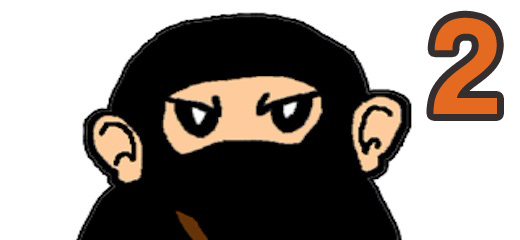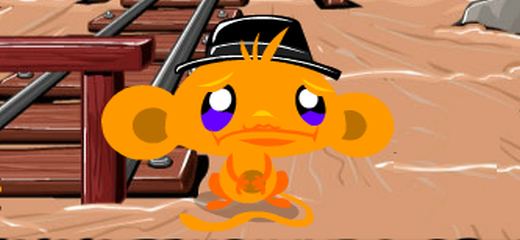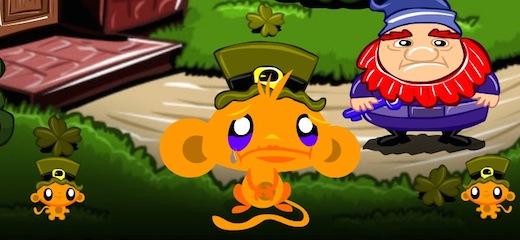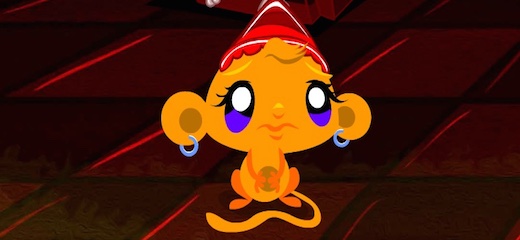Place potatoes on a large sheet pan. In a small bowl, whisk together melted butter, olive oil and garlic. Brush mixture over potatoes then season with salt and pepper. Bake for 20 minutes, until. Drop all of the biscuit quarters into the cinnamon-sugar mix. Go aheadall of them. Yes, they're sticking together right now, but just trust me. Once all the biscuit quarters are in the bag, seal it and give it a vigorous shake. You might have some excess sugar left over and that's okay. Spread these nuggets out evenly in your bundt pan.
Monkey Go Happy Gaming Potatoes Youtube
A story about social change.
By Ken Keyes Jr.
- Monkey Go Happy: Stage 469. 80% 5,621 plays Monkey Go Happy Valentines. 87% 168,829 plays Monkey GO Happy Thanksgiving. 89% 257,692 plays.
- Shop Walmart's selection online anytime, anywhere. You can use the Walmart Grocery App and start shopping now. Choose a convenient pickup or delivery time and we'll do the shopping for you.
Monkey Go Happy Gaming Potatoes 2
The Japanese monkey, Macaca Fuscata, had beenobserved in the wild for a period of over 30 years.
In 1952, on the island of Koshima, scientistswere providing monkeys with sweet potatoes dropped in the sand. The monkey likedthe taste of the raw sweet potatoes, but they found the dirt unpleasant.
An 18-month-old female named Imo found shecould solve the problem by washing the potatoes in a nearby stream. She taughtthis trick to her mother. Her playmates also learned this new way and theytaught their mothers too.
This cultural innovation was gradually pickedup by various monkeys before the eyes of the scientists. Between 1952 and 1958all the young monkeys learned to wash the sandy sweet potatoes to make them morepalatable. Only the adults who imitated their children learned this socialimprovement. Other adults kept eating the dirty sweet potatoes.
Then something startling took place. In theautumn of 1958, a certain number of Koshima monkeys were washing sweet potatoes-- the exact number is not known. Let us suppose that when the sun rose onemorning there were 99 monkeys on Koshima Island who had learned to wash theirsweet potatoes. Let's further suppose that later that morning, the hundredthmonkey learned to wash potatoes.
THEN IT HAPPENED!
By that evening almosteveryone in the tribe was washing sweet potatoes before eating them. The addedenergy of this hundredth monkey somehow created an ideological breakthrough!
But notice: A most surprising thing observedby these scientists was that the habit of washing sweet potatoes then jumpedover the sea..Colonies of monkeys on other islands and the mainland troop ofmonkeys at Takasakiyama began washing their sweet potatoes.
Thus, when a certain criticalnumber achieves an awareness, this new awareness may be communicated from mindto mind.
Although the exact number mayvary, this Hundredth Monkey Phenomenon means that when only a limited number ofpeople know of a new way, it may remain the conscious property of these people.
Item added to cart. View cart and check out. Pause slideshow Play slideshow. Play Fullscreen You have a truck, a ramp, and a bunch of stuff waiting to be destructed. Your task in this distance game is to drive a truck of the ramp as fast as you can and try to cause as much damage as possible. Much fun with Destructotruck! Destructo truck. Destructo Trucks. Online Exclusive - D1 Mid Teal Magnesium. Destructo Trucks. D1 Mid - Shaolin Magnesium 5.5. Destructo Trucks. Play Destructo Truck - New Action Game - Ninja Kiwi You have a big truck, a ramp, and a bunch of stuff waiting to be smashed. More destruction means more cash to upgrade your rig. What are you waiting f. Destructo Truck You have a big truck, a ramp, and a bunch of stuff waiting to be smashed. More destruction means more cash to upgrade your rig. What are you waiting for?

But there is a point at whichif only one more person tunes-in to a new awareness, a field is strengthened sothat this awareness is picked up by almost everyone!
From the book 'The Hundredth Monkey'by Ken Keyes, Jr.
The book is not copyrighted and the material may be reproduced in whole or inpart.


Please Note:
The 100th MonkeyTheory has been on the WOW site since 1996, and we occasionally receive lettersclaiming that it was a hoax or fake.
We contacted Penny Gillespie, who was marriedto Ken Keyes and participated in his work and writing. Here is her response:
I'm not sure what you mean by 'fake.' The Hundredth Monkey is areal book and hundreds of thousands of copies were printed and circulated, oftenthrough university courses. People bought them by the case and gave them away.

The story of the hundredth monkey came from a writing by Rupert Sheldrake.
After our book was printed, there was some question about whether the studywas authentic. Ken presented the story as a legend, or phenomenon; the conceptsof morphogenetic fields and critical mass are very true and the story serves toillustrate them.
Hope that answers your question.
All the best,
Penny Gillespie
President's Club, Platinum Wellness Consultant
www.5Pillars.com/pennygillespie
We were also forwarded the following article that'puts a new light on this popular story'
Monkey Go Happy Gaming Potatoes Download
by Elaine Myers
Going back to the original sources
puts a new light on this popular story
Is there some magic key that provides a short cut to cultural transformation?
THE STORY OF 'The Hundredth Monkey' has recently become popular in our culture as astrategy for social change. Lyall Watson first told it in Lifetide (pp147- 148), but its most widely known version isthe opening to the book The Hundredth Monkey, by Ken Keyes. (See below.) The story is based on research with monkeys ona northern Japanese Island, and its central idea is that when enough individuals in a population adopt a new idea orbehavior, there occurs an ideological breakthrough that allows this new awareness to be communicated directly from mindto mind without the connection of external experience and then all individuals in the population spontaneously adopt it.'It may be that when enough of us hold something to be true, it becomes true for everyone.' (Watson, p148)
I found this to be a very appealing and believable idea. The concept of Jung's collectiveunconscious, and the biologists' morphogenetic fields (IN CONTEXT #6} offer parallel stories that help strengthen thisstrand of our imaginations. Archetypes, patterns, or fields that are themselves without mass or energy, could shape theindividual manifestations of mass and energy. The more widespread these fields are, the greater their influence on thephysical level of reality. We sometimes mention the Hundredth Monkey Phenomenon when we need supporting evidence of thepossibility of an optimistic scenario for the future, especially a future based on peace instead of war. If enough of uswill just think the right thoughts, then suddenly, almost magically, such ideas will become reality.
However, when I went back to the original research reports cited by Watson, I did not find thesame story that he tells. Where he claims to have had to improvise details, the research reports are quite precise, andthey do not support the 'ideological breakthrough' phenomenon. At first I was disappointed; but as I delveddeeper into the research I found a growing appreciation for the lessons the real story of these monkeys has for us.Based on what I have learned from the Japan Monkey Center reports in Primates, vol. 2, vol. 5 and vol. 6, here is howthe real story seems to have gone.
Up until 1958, Keyes' description follows the research quite closely, although not all theyoung monkeys in the troop learned to wash the potatoes. By March, 1958, 15 of the 19 young monkeys (aged two to sevenyears} and 2 of the 11 adults were washing sweet potatoes. Up to this time, the propagation of the innovative behaviorwas on an individual basis, along family lines and playmate relationships. Most of the young monkeys began to wash thepotatoes when they were one to two and a half years old. Males older than 4 years, who had little contact with the youngmonkeys, did not acquire the behavior.
Monkey Go Happy Gaming Potatoes Play
By 1959, the sweet potato washing was no longer a new behavior to the group. Monkeys that hadacquired the behavior as juveniles were growing up and having their own babies. This new generation of babies learnedsweet potato washing behavior through the normal cultural pattern of the young imitating their mothers. Chad abbottthe initials game. By January,1962, almost all the monkeys in the Koshima troop, excepting those adults born before 1950, were observed to be washingtheir sweet potatoes. If an individual monkey had not started to wash sweet potatoes by the time he was an adult, he wasunlikely to learn it later, regardless of how widespread it became among the younger members of the troop.
In the original reports, there was no mention of the group passing a critical threshold thatwould impart the idea to the entire troop. The older monkeys remained steadfastly ignorant of the new behavior.Likewise, there was no mention of widespread sweet potato washing in other monkey troops. There was mention ofoccasional sweet potato washing by individual monkeys in other troops, but I think there are other simpler explanationsfor such occurrences. If there was an Imo in one troop, there could be other Imo-like monkeys in other troops.

Place potatoes on a large sheet pan. In a small bowl, whisk together melted butter, olive oil and garlic. Brush mixture over potatoes then season with salt and pepper. Bake for 20 minutes, until. Drop all of the biscuit quarters into the cinnamon-sugar mix. Go aheadall of them. Yes, they're sticking together right now, but just trust me. Once all the biscuit quarters are in the bag, seal it and give it a vigorous shake. You might have some excess sugar left over and that's okay. Spread these nuggets out evenly in your bundt pan.
Monkey Go Happy Gaming Potatoes Youtube
A story about social change.
By Ken Keyes Jr.
- Monkey Go Happy: Stage 469. 80% 5,621 plays Monkey Go Happy Valentines. 87% 168,829 plays Monkey GO Happy Thanksgiving. 89% 257,692 plays.
- Shop Walmart's selection online anytime, anywhere. You can use the Walmart Grocery App and start shopping now. Choose a convenient pickup or delivery time and we'll do the shopping for you.
Monkey Go Happy Gaming Potatoes 2
The Japanese monkey, Macaca Fuscata, had beenobserved in the wild for a period of over 30 years.
In 1952, on the island of Koshima, scientistswere providing monkeys with sweet potatoes dropped in the sand. The monkey likedthe taste of the raw sweet potatoes, but they found the dirt unpleasant.
An 18-month-old female named Imo found shecould solve the problem by washing the potatoes in a nearby stream. She taughtthis trick to her mother. Her playmates also learned this new way and theytaught their mothers too.
This cultural innovation was gradually pickedup by various monkeys before the eyes of the scientists. Between 1952 and 1958all the young monkeys learned to wash the sandy sweet potatoes to make them morepalatable. Only the adults who imitated their children learned this socialimprovement. Other adults kept eating the dirty sweet potatoes.
Then something startling took place. In theautumn of 1958, a certain number of Koshima monkeys were washing sweet potatoes-- the exact number is not known. Let us suppose that when the sun rose onemorning there were 99 monkeys on Koshima Island who had learned to wash theirsweet potatoes. Let's further suppose that later that morning, the hundredthmonkey learned to wash potatoes.
THEN IT HAPPENED!
By that evening almosteveryone in the tribe was washing sweet potatoes before eating them. The addedenergy of this hundredth monkey somehow created an ideological breakthrough!
But notice: A most surprising thing observedby these scientists was that the habit of washing sweet potatoes then jumpedover the sea..Colonies of monkeys on other islands and the mainland troop ofmonkeys at Takasakiyama began washing their sweet potatoes.
Thus, when a certain criticalnumber achieves an awareness, this new awareness may be communicated from mindto mind.
Although the exact number mayvary, this Hundredth Monkey Phenomenon means that when only a limited number ofpeople know of a new way, it may remain the conscious property of these people.
Item added to cart. View cart and check out. Pause slideshow Play slideshow. Play Fullscreen You have a truck, a ramp, and a bunch of stuff waiting to be destructed. Your task in this distance game is to drive a truck of the ramp as fast as you can and try to cause as much damage as possible. Much fun with Destructotruck! Destructo truck. Destructo Trucks. Online Exclusive - D1 Mid Teal Magnesium. Destructo Trucks. D1 Mid - Shaolin Magnesium 5.5. Destructo Trucks. Play Destructo Truck - New Action Game - Ninja Kiwi You have a big truck, a ramp, and a bunch of stuff waiting to be smashed. More destruction means more cash to upgrade your rig. What are you waiting f. Destructo Truck You have a big truck, a ramp, and a bunch of stuff waiting to be smashed. More destruction means more cash to upgrade your rig. What are you waiting for?
But there is a point at whichif only one more person tunes-in to a new awareness, a field is strengthened sothat this awareness is picked up by almost everyone!
From the book 'The Hundredth Monkey'by Ken Keyes, Jr.
The book is not copyrighted and the material may be reproduced in whole or inpart.
Please Note:
The 100th MonkeyTheory has been on the WOW site since 1996, and we occasionally receive lettersclaiming that it was a hoax or fake.
We contacted Penny Gillespie, who was marriedto Ken Keyes and participated in his work and writing. Here is her response:
I'm not sure what you mean by 'fake.' The Hundredth Monkey is areal book and hundreds of thousands of copies were printed and circulated, oftenthrough university courses. People bought them by the case and gave them away.
The story of the hundredth monkey came from a writing by Rupert Sheldrake.
After our book was printed, there was some question about whether the studywas authentic. Ken presented the story as a legend, or phenomenon; the conceptsof morphogenetic fields and critical mass are very true and the story serves toillustrate them.
Hope that answers your question.
All the best,
Penny Gillespie
President's Club, Platinum Wellness Consultant
www.5Pillars.com/pennygillespie
We were also forwarded the following article that'puts a new light on this popular story'
Monkey Go Happy Gaming Potatoes Download
by Elaine Myers
Going back to the original sources
puts a new light on this popular story
Is there some magic key that provides a short cut to cultural transformation?
THE STORY OF 'The Hundredth Monkey' has recently become popular in our culture as astrategy for social change. Lyall Watson first told it in Lifetide (pp147- 148), but its most widely known version isthe opening to the book The Hundredth Monkey, by Ken Keyes. (See below.) The story is based on research with monkeys ona northern Japanese Island, and its central idea is that when enough individuals in a population adopt a new idea orbehavior, there occurs an ideological breakthrough that allows this new awareness to be communicated directly from mindto mind without the connection of external experience and then all individuals in the population spontaneously adopt it.'It may be that when enough of us hold something to be true, it becomes true for everyone.' (Watson, p148)
I found this to be a very appealing and believable idea. The concept of Jung's collectiveunconscious, and the biologists' morphogenetic fields (IN CONTEXT #6} offer parallel stories that help strengthen thisstrand of our imaginations. Archetypes, patterns, or fields that are themselves without mass or energy, could shape theindividual manifestations of mass and energy. The more widespread these fields are, the greater their influence on thephysical level of reality. We sometimes mention the Hundredth Monkey Phenomenon when we need supporting evidence of thepossibility of an optimistic scenario for the future, especially a future based on peace instead of war. If enough of uswill just think the right thoughts, then suddenly, almost magically, such ideas will become reality.
However, when I went back to the original research reports cited by Watson, I did not find thesame story that he tells. Where he claims to have had to improvise details, the research reports are quite precise, andthey do not support the 'ideological breakthrough' phenomenon. At first I was disappointed; but as I delveddeeper into the research I found a growing appreciation for the lessons the real story of these monkeys has for us.Based on what I have learned from the Japan Monkey Center reports in Primates, vol. 2, vol. 5 and vol. 6, here is howthe real story seems to have gone.
Up until 1958, Keyes' description follows the research quite closely, although not all theyoung monkeys in the troop learned to wash the potatoes. By March, 1958, 15 of the 19 young monkeys (aged two to sevenyears} and 2 of the 11 adults were washing sweet potatoes. Up to this time, the propagation of the innovative behaviorwas on an individual basis, along family lines and playmate relationships. Most of the young monkeys began to wash thepotatoes when they were one to two and a half years old. Males older than 4 years, who had little contact with the youngmonkeys, did not acquire the behavior.
Monkey Go Happy Gaming Potatoes Play
By 1959, the sweet potato washing was no longer a new behavior to the group. Monkeys that hadacquired the behavior as juveniles were growing up and having their own babies. This new generation of babies learnedsweet potato washing behavior through the normal cultural pattern of the young imitating their mothers. Chad abbottthe initials game. By January,1962, almost all the monkeys in the Koshima troop, excepting those adults born before 1950, were observed to be washingtheir sweet potatoes. If an individual monkey had not started to wash sweet potatoes by the time he was an adult, he wasunlikely to learn it later, regardless of how widespread it became among the younger members of the troop.
In the original reports, there was no mention of the group passing a critical threshold thatwould impart the idea to the entire troop. The older monkeys remained steadfastly ignorant of the new behavior.Likewise, there was no mention of widespread sweet potato washing in other monkey troops. There was mention ofoccasional sweet potato washing by individual monkeys in other troops, but I think there are other simpler explanationsfor such occurrences. If there was an Imo in one troop, there could be other Imo-like monkeys in other troops.
Instead of an example of the spontaneous transmission of ideas, I think the story of theJapanese monkeys is a good example of the propagation of a paradigm shift, as in Thomas Kuhn's The Structure ofScientific Revolutions. The truly innovative points of view tend to come from those on the edge between youth andadulthood. The older generation continues to cling to the world view they grew up with. The new idea does not becomeuniversal until the older generation withdraws from power, and a younger generation matures within the new point ofview.
It is also an example of the way that simple innovations can lead to extensive cultural change.By using the water in connection with their food, the Koshima monkeys began to exploit the sea as a resource in theirenvironment. Sweet potato washing led to wheat washing, and then to bathing behavior and swimming, and the utilizationof sea plants and animals for food. 'Therefore, provisioned monkeys suffered changes in their attitude and valuesystem and were given foundations on which pre-cultural phenomena developed.' (M Kawai, Primates, Vol 6, #1, 1965).
What does this say about morphogenetic fields, and the collective unconscious? Not very much,but the 'ideological breakthrough' idea is not what Sheldrake's theory of morphogenetic fields would predictanyway. That theory would recognize that the behavior of the older monkeys (not washing) also is a well-establishedpattern. There may well be a 'critical mass' required to shift a new behavior from being a fragile personalidiosyncrasy to being a well-established alternative, but creating a new alternative does not automatically displaceolder alternatives. It just provides more choices. It is possible that the washing alternative established by themonkeys on Koshima Island did create a morphogenetic field that made it easier for monkeys on other islands to'discover' the same technique, but the actual research neither supports nor denies that idea. It remains forother cultural experiments and experiences to illuminate this question.
What the research does suggest, however, is that holding positive ideas (as important a step asthis is) is not sufficient by itself to change the world. We still need direct communication between individuals, weneed to translate our ideas into action, and we need to recognize the freedom of choice of those who choose alternativesdifferent from our own.
from: http://www.context.org/ICLIB/IC09/Myers.htm
